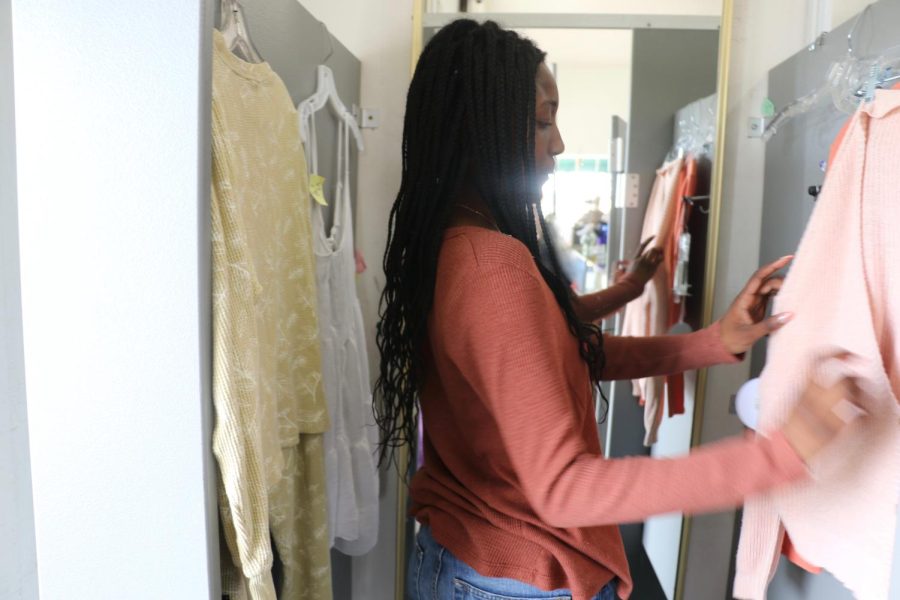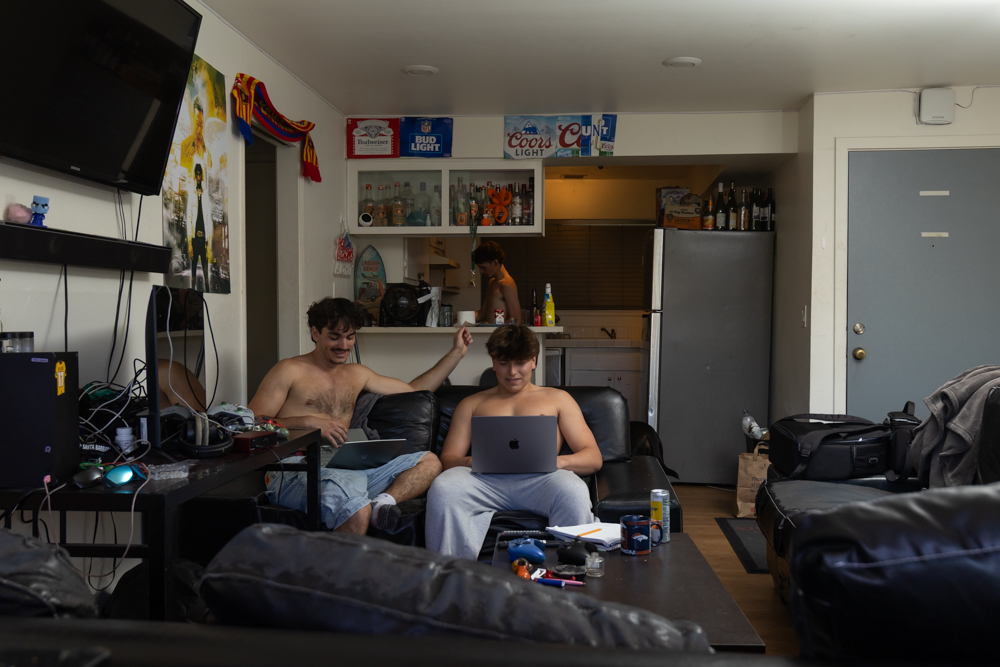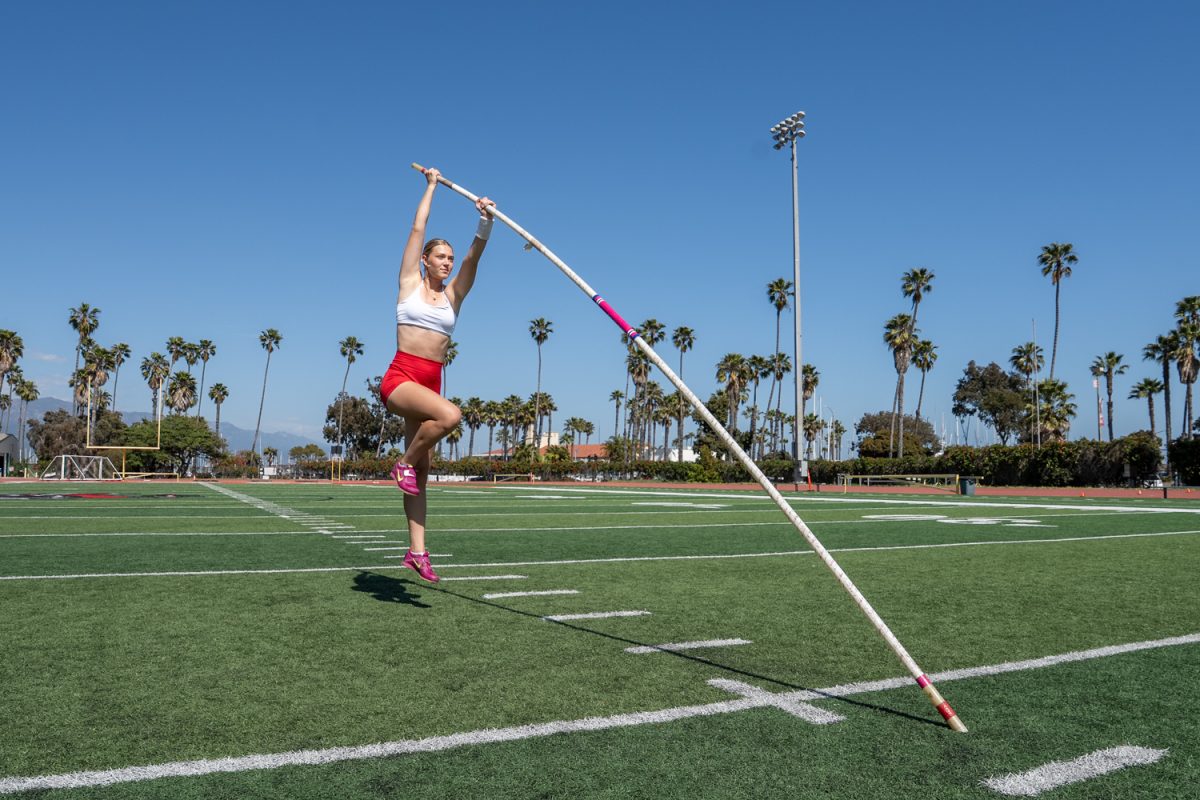For thrift shopper Aniyah Morris, her family’s frequent trips to the thrift shops were constantly mocked by her peers when growing up. According to ThredUp, today newer attitudes towards sustainable living have created an increased trend of vintage and second-hand clothing, opening the door for affordable fashion.
“I used to get made fun of for wearing ‘old people clothes,’ and now people are praised for their thrift finds,” Morris said. “I don’t mind though. I think it’s great that my little brother can go to school and be proud of his thrifted shoes.”
However, according to 10 News, second-hand stores locally and across the U.S. have begun raising prices on their clothing, specifically items donated from well-known and higher-end brands. This shift in pricing has raised multiple questions about the potential effects on the thrift industry and its consumers, consisting of particularly lower-class communities.
While the trend of thrifting has made strides in destigmatizing bargain shopping, a common argument against the hobby is its increases gentrification due to its rising trendiness. Wealthier shoppers have begun to frequent second-hand store shoppers in search of the same items as low-income shoppers, who are the original clientele for consignment shops. Furthermore, many wealthy shoppers aren’t just wearing these items but flipping them for profit.
The introduction of online marketplaces such as Depop and Poshmark has made curated vintage and second-hand clothing more accessible than ever, especially with the pandemic’s impact on in-person shopping. As consumers continue to favor the safety and convenience of shopping from home, the popularity of online thrift stores continues to accelerate. However, these digital markets also allow some vendors to mark up the price of their inexpensive thrifted finds for a larger profit. While many see this as unethical, reselling can still be a viable option for sustainable fashion. In many instances, you are paying for the reseller’s time, energy, and ability to find, and possibly upcycle an item.
“Shopping on apps like Depop makes it much easier to find a pair of perfectly-fitting vintage Levi’s than by spending time sifting through racks at a thrift shop,” NPR reports.
Even so, the phenomenon of wealthier thrifters and resellers has created a perception of scarcity of quality thrifted items. Many believe that they are not only taking away from low-income communities but directly causing the increase in thrift store pricing by shifting the clientele.
On the other hand, it’s important to consider the large scale at which thrift stores cycle clothes.
“I don’t think we’ll ever be in a place where we don’t have stuff,” the assistant national community relations at The Salvation Army, Greg Tuck said in an article by the Wall Street Journal(WSJ).
The Environmental Protection Agency reports that 60 percent, or 10 million tons of clothing, becomes landfill waste after they are donated, recycled, or sent overseas.
So while buying and reselling second-hand clothes can be immoral in some cases, it only impacts a fraction of thrift store merchandise. This, in turn, raises the question: are wealthy shoppers and resellers rightfully vilified for the rise in thrift store prices? Or is the inflation a result of the capitalistic greed held by million-dollar companies?
Corporations such as Goodwill and The Salvation Army may be defined as non-profit, but a majority of their welfare programs are largely performative. In reality, they are indistinguishable from their corporate cohorts. These companies, according to the WSJ, have “gotten wise to the fact that there are covetable, profitable gems lurking in their trove of textiles.” It is well within America’s capitalist-driven culture for these corporations to raise their prices the moment consumers give them an opportunity to.
“I don’t know what the reason for the rise of prices is, but I don’t think it’s going towards our paychecks,” a Ventura County Goodwill employee said.
Whatever the cause of the rising costs may be, this inflation has created a multitude of issues for consumers. As thrift store prices continue to rise, it is becoming more cost-effective for consumers to purchase new clothing from fast fashion retailers rather than buying secondhand. Consumers are starting to question the value of shopping at thrift stores, especially if they can find similar items online for a lower price.
“Sustainability should be equitable,” Morris said. “Next thing you know people are looking down at fast fashion shoppers because now that’s the only thing that they can afford.”




![Milton Alejandro Lopez Plascencia holds a flag showcasing the United States and Mexico on Feb. 7 in Santa Barbara, Calif. “It’s heartbreaking to see what is happening all across the country,” Lopez Plascencia said. “I [want] my voice to be heard by the community.”](https://www.thechannels.org/wp-content/uploads/2025/05/MGSImmigration-1-1200x800.jpg)


![The new Dean of Social Science, Fine Arts, Humanities and English, Eric Hoffman beams on May 2 in Santa Barbara, Calif. "My major professor in college [inspired] me," Hoffman said. "You can really have a positive impact on people's lives in education."](https://www.thechannels.org/wp-content/uploads/2025/05/MGSHoffman-2-1200x800.jpg)







